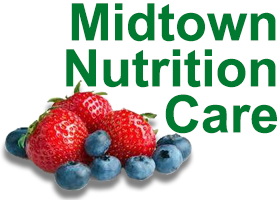Hypertension (HTN) is the medical term for high blood pressure, which is when the heart is working harder than normal to pump blood throughout the body. You usually cannot feel high blood pressure, so it is often referred to as “the silent killer”. Often people are not aware they have high blood pressure until they have their blood pressure checked at a routine doctor visit.
NEW CATEGORIES OF HIGH BLOOD PRESSURE
Recent changes in blood pressure guidelines categorize your level based on your top number, or your bottom number, as follows:
Normal is less than 120 (top number) with less than 80 (bottom number).
Elevated is between 120 and 129 (top number) with less than 80 (bottom number)
HTN Stage 1 is between 130 and 139 (top number), or between 80 and 89 (bottom number).
HTN Stage 2 is 140 or more (top number), or 90 or more (bottom number).
HTN Crisis is 180 or more (top number), or 120 or more (bottom number).
There is no Pre-Hypertension category anymore.
WHO DEVELOPS HYPERTENSION?
There are many risk factors for developing hypertension, including things we can and cannot control. For example, we do not have control over our age, gender, race, ethnicity or family history. On the other hand, we may be able to manage sleep apnea, stress and obesity, and we can also improve lifestyle factors such as increasing physical activity level, reducing alcohol intake, stopping smoking, and reducing salt intake.
SALT
Salt (sodium) attracts fluid in the body. The more sodium we consume in our diet, the more fluid our bodies retain. When the fluid levels in our bodies are elevated the heart has to work harder to pump blood. This can lead to high blood pressure, especially if our arteries are already narrowed due to high cholesterol levels. The American Heart Association recommends an intake of 1500 mg sodium/day, even for those who do not have HTN.
Foods high in sodium include canned foods, processed foods, packaged deli meats, pickled vegetables, and table salt (a single serving packet contains 400 mg, a teaspoon contains 2300 mg). Restaurants often add a lot of salt when cooking, and may use high sodium flavorings such as soy sauce, MSG, or seasoning salts.
There are many ways to reduce dietary sodium. Try to prepare and consume fresh foods whenever possible. Add spices or salt substitutes instead of table salt when flavoring food, such as Ms. Dash, garlic/onion powders, and lemon. Read labels carefully to identify amounts of sodium in packaged foods. It can also be helpful to ask if reduced salt options are available when dining out, or ask for sauces on the side. More than 75% of the sodium Americans consume is estimated to come from processed foods rather than the salt shaker.
WEIGHT
When we are above our ideal body weight, even by a few pounds, our heart has to work harder than necessary to pump enough blood to reach our entire body mass. A weight loss of as little as 5-10% of our body weight can cause a significant decrease in blood pressure levels.
EXERCISE
Exercise helps to strengthen the heart and cardiovascular system. The more we exercise the more efficient our heart becomes at pumping blood throughout the body, which helps to lower blood pressure. Exercise can also help reduce stress. Aim for at least 30 minutes, 5 days/week, as recommended by the American Heart Association.
